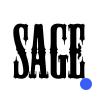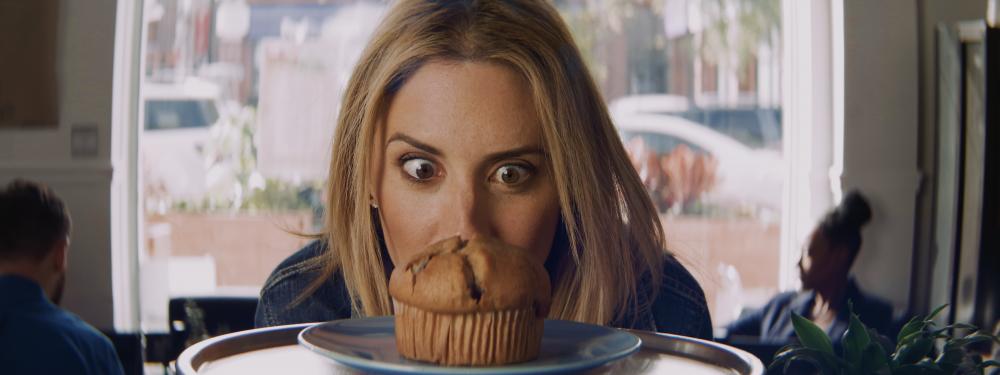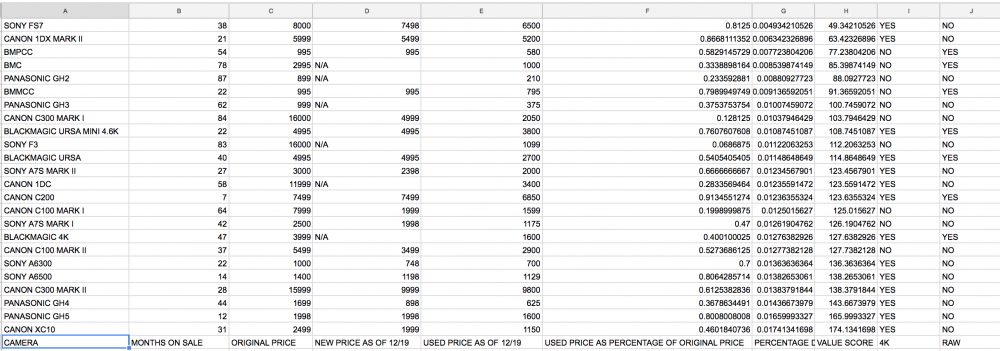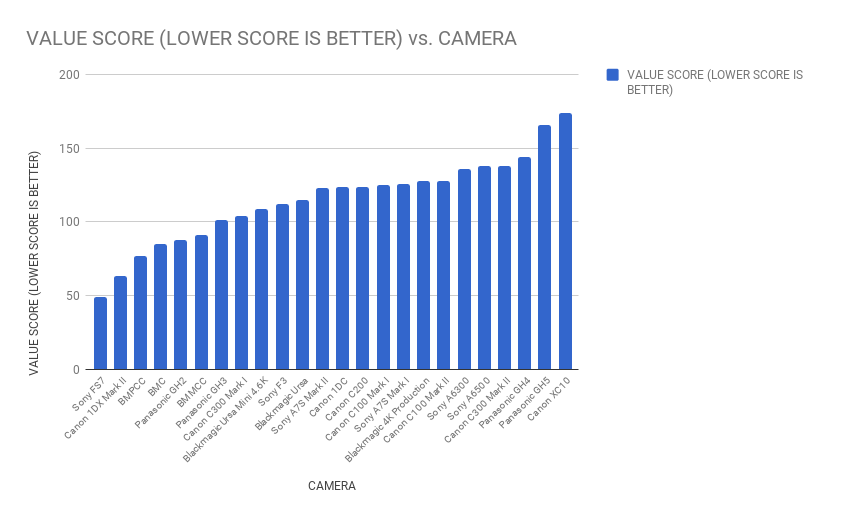Leaderboard
Popular Content
Showing content with the highest reputation on 12/21/2017 in all areas
-

GH5 to Alexa Conversion
Ricardo Constantino and 3 others reacted to AaronChicago for a topic
4 points -

Panasonic GH5 - all is revealed!
webrunner5 and one other reacted to midloch for a topic
To me is GH5 the most capable camera to very extreme conditions. I have just spent 10 days in peruvian amazon rainforest and the humidity and muddy conditions were hard. I shot V-log 10bit 24p and the results seems to me very good (filmic :-D) as you can see on this very short trailer to movie about expedition to Matses tribe:2 points -

Magic Lantern Raw Video
webrunner5 and one other reacted to Stathman for a topic
The guys at the ML forum are having progress on the digic 6. Hopefully santa will come with an 80D!2 points -
We all know that cameras are terrible investments. They instantly lose value when you open them and they’re no longer new-in-box, and then they steadily lose value over time. It really only makes sense to think of a camera as an investment if you’re a business buying a camera that will directly impact your ability to get work or if you’re a collector selling rare antiques. Otherwise, you can only plan on losing money on whatever camera that you buy. Buying a camera and expecting it to increase in value is usually really silly. At the same time though, cameras lose values at different rates. Some cameras command used rates very near their launch prices, and other cameras sell for way less than their initial price a year after launch. Importantly though, I think the value of a camera over time can show how forward-looking the company that launched the camera was with that model when it released it. A camera released in 2014 that’s still relevant right now had valuable features in 2014, but is also is still competitive in some way in 2017 (or 2018). I’m thinking that the forward-looking value of a camera can be calculated based on a few points of data: first, how long the camera has been on the market; second, how much the camera cost when it was initially released; and third, how much the camera is selling for used today. In short, I think the difference between what a camera sold for when it was released and what you can buy it for used today can show how competitive the camera is relative to other cameras. So, what I did was to search out data for some of the most commonly used cameras for video and analyze how old they are, how much they sold for when first released, and how much they sell for now. The short version is that I made a Google Sheet and compared the values of cameras over time to see which cameras held their values best over the months they’ve been on the market. The long of it is this: I made ten columns in a Google Sheet. The first column identifies the camera. I chose cameras that are most discussed on the blogs that I frequent, like this one, but I purposely excluded cameras that are also super popular in photography, like the 5D Mark II and III. Their used online value might be less attached to their video functions than others here. The second column is the number of months the camera has been on sale. I used the actual “the camera is available on B&H” date whenever possible. For cameras where the announcement date and the sale date weren’t hugely different, I didn’t make a distinction. For cameras (like some Blackmagic cameras) that were announced and didn’t go on sale until months later, I used the actual “available for sale” date when I could find it. I rounded to the nearest month. The third column is the original price that the camera sold for. The fourth column is the new price as of 12/19/17 (this is mostly for my curiosity and doesn't actually figure into any of the calculations). The fifth column is the used price as of 12/19/17-12/20/17. I used the lowest “Buy-It-Now” price from eBay (US) I could find for each camera, but I only accepted cameras that I would actually purchase (if I was looking for one) based on their being used but totally functional and coming from buyers with decent feedback. The sixth column is the used price as a percentage of the initial new price. For example, a camera that debuted for $2,000 and now sells for $1,000 is selling for 50% of its initial price. The seventh column is the percentage of value lost divided by the number of months the camera has been on the market. I found the percentage of value lost by subtracting the percentage of the new price that the camera sells for used from one. The eighth column is the tiny percentage from the seventh column multiplied by 10,000 to make it more readable. I’m basically creating a “value score,” where the lowest number is the camera that has retained its value the best. The ninth and tenth columns are whether the camera shoots in 4K or raw, respectively, because I wondered whether that would make an obvious difference. This is a graph with each camera’s “value score” (the percentage drop per month multiplied by 10,000), rounded to the nearest one. Essentially, the lower the score, the less value the camera has lost over time, or in other words, the better it’s retained its value relative to the number of months it’s been on the market. Here’s all the original data. So, basically the FS7 has lost very little of its value over time, while the Canon XC10 has lost a ton of its value over time. Most cameras fall in the middle range. Interestingly, every major company has a camera in the top five, and every major company also has a camera in the bottom five. Interestingly, 1080p and 2.5K cameras do pretty well by these calculations. The BMPCC, BMC, Panasonic GH2, BMMCC, and GH3 have all held their value relatively well, while a lot of 4K cameras have lost value relatively quickly. I wondered whether raw shooting cameras would do better, but I don’t think there’s a strong correlation. I’m sure there’s some complex relationship between resolution, codec strength, lowlight ability, sensor size, marketing, and a million other factors, but I don’t know what it is. Interestingly, it’s also possible that the most popular cameras sell for lower prices relative to their new prices because so many people have bought them and used supply is high when those customers decide to move on to new cameras. However each camera has maintained its value, I think the cameras with low scores were (are) futuristic in some way. They have to be to still be relevant today, or to have still been relevant so recently (in the case of the GH2). There’s a lot of limitations to my analysis. It’s mostly for fun and to drive discussion. First, the eBay prices are a tiny sample over two days. I’ve seen cameras go for a lot lower than the prices listed here. I saw a BMMCC go for $550 a few days ago, but when I actually did the analysis the lowest price I could find was $800. That’s a substantial change, but I wanted to take all the prices from one window of time. Second, I don’t think eBay is (usually) actually the lowest price source for buying a camera used. The cheapest BMPCC I could find is $580, but there’s one on BMCUser now that’s less and comes with a cage. I’m totally open too to the fact that my math might be less than perfect. I’m not a statistician. I’m just a camera nerd with love for data. Please feel free to point out how I could make it better or if it’s all not valid at all. Or, please let me know if I’ve missed major dates, miscalculated months, or mistook the initial price. I threw this together pretty quickly out of curiosity and can fix it. I’m not picking on any particular camera. I’ve almost bought an XC10 a few times. At the end of the day, whatever camera you buy needs to fit your needs, and the idea that it might retain value isn’t really important if it’s meeting those needs. But, some cameras hit the market and are so cutting edge that they hang on for years. My goal was to look backward with data to see which cameras those were.1 point
-
2016 vs 2017 MacBook Pro for Resolve?
EthanAlexander reacted to timepresent for a topic
seems kaby lake has some hardware acceleration for 10bit color and/or h265 would make the 2017 model much more future proof ...1 point -

2016 vs 2017 MacBook Pro for Resolve?
jonpais reacted to Don Kotlos for a topic
There is no big difference in performance between between the two models. The GPU is practically the same. You can't change anything in the latest models so choose according to your hard drive needs. You will see the biggest difference in performance once you use an egpu solution cause resolve needs as much GPU power as you can get. That will work with both models.1 point -
Yes, look up tables intended for log won't work (Rec709 space). Ryan Glover of Dvxuser had an interesting approach of using a partial film emulation on top of Main - which it was I'll have to ask him. Main and Soft give the modern Arri cinema grade that only requires a dial in of Lift/Gamma/Gain to meet spec (i.e. Sicario). For film, and Arri with emulated film (i.e. scenes in Birdman), what I am working on now may involve that1 point
-

Panasonic seems to be announcing something "BIG" on December 15
EthanAlexander reacted to DBounce for a topic
Saying Sony will not help Panasonic is like saying Samsung would not help Apple. But in fact, they do supply screens and other components to Apple... and other competitors. In the end money is money. Android users do cross-shop iOS devices, as do iOS user consider Android. If these industry titans can sell to one another, I am certain the same can be said for Sony and Panasonic.1 point -
GH5 to Alexa Conversion
AaronChicago reacted to austinchimp for a topic
Looks nice. I like what it's done to the highlights, and the skin looks great. How does it compare to how you'd graded it before?1 point -

GH5 to Alexa Conversion
AaronChicago reacted to Sage for a topic
Yes! I'm excited to see it. Share the results with me when you get a chance : )1 point -
Would love some thoughts on this acoustic music video I directed. Shot on ARRI Alexa in 40 minutes (the time we had available with the orchestra)1 point
-
First, very nice looking! A gazillion times better than anything I could do! So please take my thoughts in that context. Without the right juxtaposition, all art, from music to film, breaks the spell, which can only be one. What is the spell you're trying to get the viewer under? I start, I'm following a guy walking down an alley. It seems very confined. Has a title, am I in a James Bond movie, who is this guy? Then a swoosh sound. And I'm now with him in a building, a large stage, smokey light, a piano-- another young guy. Is the film really about the piano guy, both of them? The other guys starts singing. I see him from one angle, then another, then another. Then an orchestra. But no one is in the audience. Why? Why a big orchestra and no people? Then he's singing close to the mic. then he's singing far away from the mic. Lips don't see perfectly in sync with music--okay it's a music video. A music video. So my question is, were you directing to create a story or just filming? Something to think about next time maybe. I thought this a very interesting analysis of music videos done by David Fincher, if you haven't seen it.1 point
-
Thanks! I'm working for him full time. Every shot is filmed handheld with the ARRI except the wide orchestra ones which is shot on the GH5.1 point
-
1 point
-
Panasonic seems to be announcing something "BIG" on December 15
seku reacted to Cliff Totten for a topic
Thinking about the GH5-S. I really think that Panasonic and Sony Semiconductor really do team up beautifully together. With Sony's sensors and scaling engine teamed up with Panasonic's color science and feature marketing boldness, they make the GH5 one sweet camera. I can only imagine what this "dynamic duo" will come up with in a possible GH5-S. This a combo that really makes the consumers the big winner. The only loser could be Sony Imaging Company! Anybody that thinks that the GH5's MFT sensor does not compete with Sony's APS-C or full frame models....is lying to themselves.1 point -
Panasonic seems to be announcing something "BIG" on December 15
webrunner5 reacted to mat33 for a topic
Considering the Digital Bolex and BMPCC come out in 2013 from very small companies (what digital bolex was really quite an achievement for such a small team) it's somewhat surprising we haven't already. Instead of spending R&D on all the whizz bang features and compressed codecs, couldn't at least one larger company focus on colour science, motion cadence and using prores and raw. Maybe now the C200 is out with raw being the big feature, we'll start to see some movement in this area.1 point -
Panasonic seems to be announcing something "BIG" on December 15
Fritz Pierre reacted to PannySVHS for a topic
better at what? ultra low light, well that is nothing Godfather or other Bmovies were shot at. Not even the King of Darkness, Gordon Willis shot at ultra low light. Panasonic is not late at all. All their video orientated DSLMs have been top notch. GH5 will show less artefacts in low light but more noise. Which of the two looks more "filmic"? I say, noise over artefacts any time.1 point -

Panasonic seems to be announcing something "BIG" on December 15
Cas1 reacted to webrunner5 for a topic
You forgot to add that it would Only cost about $1,000.00 instead of $15,000.00 it would probably cost to build it LoL. Everyone in the world would buy that camera if it was 2 grand! It would look like a Apple iPhone roll out with people camping in tents 4 days ahead of the launch outside of a Panasonic store.1 point -
also remember that 1080p RAW is less than 1080p video in resolution... debayering eats resolution. But ML RAW's forté lies elsewhere, as we know1 point
-

Does an external recorder eliminate SLog3 Banding?
Pavel Mašek reacted to maxotics for a topic
Why sell your external recorder? Was that what I suggested? I only said that banding can be a result of an aggressive LOG profile, as Don said, or from too little color information due to a high compression CODEC that uses 420. We both have different roles, right? You shoot and grade real stuff I assume. I'd hire you over me to go shoot something. I test stuff, a more scientific approach. We're here to educate each other, I hope Just so the OP can make sense of this I will explain some of this stuff in more detail, as I understand it! Many filmmakers believe their cameras record color just like our eyes/brains do. But they don't. Cameras can only see in gray-scale actually. The manufacturers put color filters over alternating pixels and then composite a "color". But it's not really a color. It's just a brightness value of light through a filter with the noise floor of the silicon as a reference/floor. Too much brightness, and the value doesn't change. The #1 confusion I see is the belief that these values have an implied relative brightness; that is, that the brightness difference between 100 and 200 would mean double the brightness as we see it. That SHOULD be the case, but isn't. The camera records linear, we see exponentially. But even that is IN THE WEEDs. The fact is, as YOU WOULD BE THE FIRST TO POINT OUT, the real world of grading is getting an image that looks right to the viewer, or conveys the feel the filmmaker wants. That will mean adjusting the relationship of brightness across the image... But but but..., you must have enough color data to fit your display gamma or you will notice where you don't have enough color, which is banding in smooth color gradients. You can't widen your gamma (LOG) in a fixed data color space (8-bit) and assume that you will always have enough color information in your image to fully saturate a gradient. Don was basically saying, the less aggressive LOG you use, the less chance you have to run into banding. AGREE!!!! And he'd know more than I about which LOG profiles do what in the real world. Let me say this again in other words. Extending a gamma beyond the amount of color data you have can increase banding. Similarly, forcing more color into a narrow gamma will result in an image that has no discernable visual difference, which is why LOGs can have benefits in certain circumstances (they exploit what may be unnecessary color data). But you have to really know your shit to know when that is! What I learned in my experiments is I did NOT know my sh_t As for the external recorder, I was just pointing out that its benefit can affect banding, but is a separate issue from how it happens when using a LOG gamma for shooting in an 8bit space? The OP should really be clear about the differences, right, before assuming one will fix the other? If he was, I don't believe he would have asked the question because it's very subjective, or too variable to give an objective answer, right? Are we friends again?1 point -

Does an external recorder eliminate SLog3 Banding?
Pavel Mašek reacted to maxotics for a topic
Self appointed LOG police here. A camera's normal gamma profile is designed to maximize color saturation across an 8/24-bit gamma curve. As soon as you shoot LOG, you accept a trade off between gray-scale DR and chroma. The improvement you'll get shooting external 422 (if the camera shoots internal 420) has nothing to do with the banding from chroma spread out too thinly on a gamma curve, it is about compression. To reduce data 420 substitutes more color than 422. Two different types of banding (or color loss). I'm just extending what @Don Kotlos said above. My 2-cents is don't shoot a LOG profile that will give you noticeable banding (which depends on what you shoot) and expect a more lossless CODEC to save you1 point -
i would say that in general 1080p ML raw is not for highly detailed shooting – the 5d3 is resolving way less detail than the current competition. a highly resolved 4k image looks worlds clearer than a 1080p one on my 1080 plasma; on a 4k screen the difference will be even more significant and the screen will be far less forgiving overall, so be prepared for that1 point
-

Magic Lantern Raw Video
tomekk reacted to webrunner5 for a topic
Well not to sound snide it pretty much depends how big of a computer monitor you have. I use a 30" 2k HP IPS screen. That is close to a 32" TV that a lot of people still watch TV with. But yes if you are 12' away from it even a 42" it would be less sharp than right up in front of it. My son uses a 42' Plasma TV as his "gamer" monitor. He is less than 6 feet from it, so just about anything looks good that close LoL. ML 1080p is sharper than normal Canon 1080p output. That would not be hard to do. Canon has never been known for razor sharp 1080p. But i doubt any 1080p is ever going to look as sharp as 4k no matter how good it is. I mean we are talking 4x the resolution which on paper should be twice as sharp. But some Blackmagic and Canon Raw 1080p stuff I have seen is pretty damn good. I know a lot of people say from that far away you can't tell the distance but I was in Best Buy to buy some GoPro accessories a few days ago and they had a Samsung 55" 4k OLED HDR TV there that was breath taking 50 foot away. I walked all the way over to look at it and it stood out like a sore thumb next to the rest of the 4k TV's around it. So that is 4k next to 4k and it was a Big difference. 1080p would have, well not been so hot I would guess.1 point -
I've been using the EOSHD C-LOG for the past month, now, shooting for a hybrid web-series and cooking class called "STIR!". For the most part, I've really been pleased with the results. Not having much experience color grading, it's been pretty easy to achieve a look I like using either the Technical or Creative LUT presets in Adobe Premiere's Lumetri as a base. Here's the commercial for the next event, shot entirely with C-LOG on my 5d4 at 1080/60p and using the (legacy) Cinespace2383 creative LUT as the base. and here's the episode we just released: I switched to EOSHD C-LOG in the middle of taping the segments. Can you tell which is which? (probably, since I'm a newb ;-) I did have a rather "serious" issue between cameras, which I simply wasn't expecting. The last segment, about Moriah Pie beginning at 23:26, the interviews, gardening footage, and home kitchen cooking were shot with the first of my two 80Ds with C-LOG at 1080/60p. Any shots involving pizza service/actual restaurant operation were shot by my 2nd Unit with my second 80D with C-LOG at 1080/24p. The footage was not easily interchangeable between the two. The 2nd Unit's footage looked entirely different when I'd apply the same LUT (and ended up only needing a contrast push to get it to where I wanted it to be). The weirder part was that I shot some footage in the same commercial kitchen with my 5D4 at CLOG/1080/60p and it matched my own 80D footage easily. I haven't had the opportunity to really use the scientific method to figure out why things turned out the way they did, but I need to. For the record, on the Moriah Pie segment: Interviews: 80D-A -> 24-70/f4L IS at CLOG/1080/24p IPB Gardening/Home Cooking: 80D-A -> 16-35/f4L IS at CLOG/1080/60p IPB Commercial Cooking/morning meal (lens flares): 5D4 -> 35mm/f2 IS at CLOG/1080/60p IPB Commercial Cooking/evening food service: 80D-B -> 40mm/f2.8 STM at CLOG/1080/24p IPB So, I'm thus far enjoying EOSHD C-LOG and just need to figure out what I'm doing wrong on one of these cameras. I will be using EOSHD C-LOG on a fleet of rented 1DX2s in the very near future! Cheers, JP1 point





